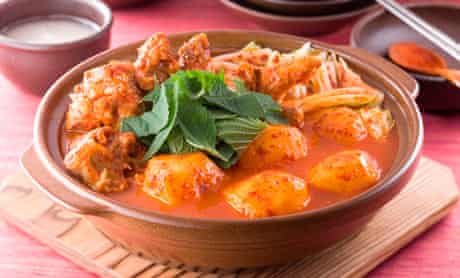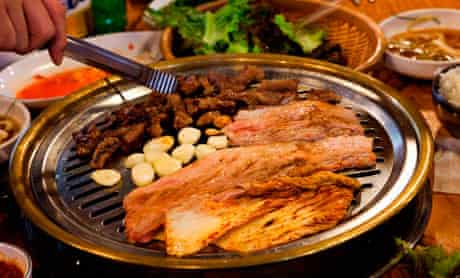Seoul, Korean Sŏul, formally Sŏul-t’ŭkpyŏlsi (“Special City of Seoul”), city and capital of South Korea (the Republic of Korea). It is located on the Han River (Han-gang) in the northwestern part of the country, with the city centre some 37 miles (60 km) inland from the Yellow Sea (west). Seoul is the cultural, economic, and political centre of South Korea. Except for a brief interregnum (1399–1405), Seoul was the capital of Korea from 1394 until the formal division of the country in 1948. The name itself has come to mean “capital” in the Korean language. The city was popularly called Seoul in Korean during both the Chosŏn (Yi) dynasty (1392–1910) and the period of Japanese rule (1910–45), although the official names in those periods were Hansŏng (Hanseong) and Kyŏngsŏng (Gyeongseong), respectively.
Food in Seoul
1. Rice cakes in sauce (tteokbokki)
The dish The perfect fuel for the fast-paced Korean lifestyle, tteok are glutinous tubular rice cakes, usually submerged in gochujang, a red chilli pepper sauce. Tteok (pronounced "tok") are the chips of Korea – they're sold at every food stall and eaten standing up. For the real tteokbokki experience, head to Sindang neighbourhood, where numerous restaurants liven up the dish with cabbage, onions, noodles and fishcakes. The standout place on this street is Mabongnim Tteokbokki, which has been around since 1953. This is one of the oldest eateries in a city where many restaurants open in the morning and have gone out of business by evening.
2. Pork and potato soup (gamjatang)
The dish Korean foods are often seasonal, and gamjatang is one of the most filling and warming winter dishes around. A hearty soup of potato and pork that's easy to get wrong, gamjatang done properly means a rich and spicy broth flavoured with garlic, onion and ground perilla seeds, plentiful chunks of potato, and a hunk of pork with the meat falling off the bone. In the many small restaurants on Gamjatang Street, pots big enough to serve two arrive at the table with the broth still boiling.
3. Korean barbecue (gogi-gui)
The dish Barbecue is Korea's best-known dish for a reason. It's a genius concept – grab a few friends, order up some soju, throw some pork (samgyupsal) or beef (sogogi) on the grill in the centre of the table and get stuck in. Barbecue restaurants cover Seoul like a rash, but the Majang meat market – Korea's largest – means better-quality meat a low prices. Savvy restaurateurs have set up shop right by the market and there's plenty of competition for customers. Walk around and see who'll give you the best deal; then get ready to stuff your belly full of meat.



No comments:
Post a Comment